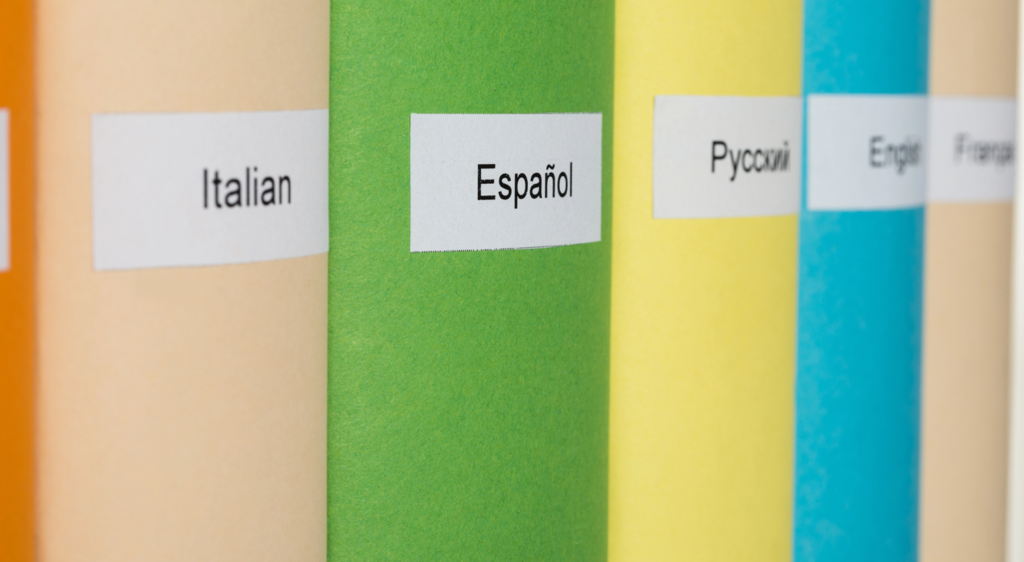Swedish, known as “Svenska” in its own right, is a Germanic language spoken mainly in Sweden and parts of Finland. With over 10 million native speakers, Swedish is an important language in the Nordic region and an official language of the European Union. Learning Swedish not only opens doors to Sweden’s rich culture, but also facilitates communication in a region known for its innovative design and quality of life. Swedish for beginners is the key to entering this fascinating world and taking advantage of all the opportunities it has to offer.
Swedish-speaking countries
Swedish is the official language of Sweden and one of the official languages of Finland. In Finland, Swedish is spoken mainly on the west coast and the Åland Islands. There are also Swedish-speaking communities in Estonia and other countries where the Swedish diaspora has settled.
The aim of this guide to Swedish for beginners is to provide a practical and accessible introduction to the Swedish language. Learning basic expressions will not only facilitate communication in everyday situations, but will also enable a deeper immersion in Swedish culture. By the end of this guide, readers should be able to cope in a variety of situations and feel more comfortable interacting with native Swedish speakers.

Advantages of learning basic Swedish expressions for beginners
In this Swedish for beginners guide, we offer you a selection of essential Swedish phrases to learn. There are many advantages to this learning :
- Improved communication: the following expressions facilitates everyday interaction, from greetings to requests for directions.
- Cultural connection: this learning provides a better cultural understanding and appreciation of Sweden.
- Professional development: the knowledge of Swedish can open doors on the job market, particularly in Swedish or multinational companies.
- Personal growth journey: learning a new language is a challenge that enriches and develops cognitive abilities.
Greetings and goodbyes
Examples of formal and informal standard greetings
In Swedish, greetings can vary according to context and level of formality. Here are a few examples:
- Hi (informal): Hejsan *
- Hello [à toute heure] (formal): Hej *
- Good morning [before noon] (formal): God morgon *
- Good afternoon [between noon and 5 p.m.] (formal): God eftermiddag *
- Good evening [after 5 p.m.] (formal): God kväll *
* Don’t forget that you’ll find the exact pronunciation of these and many other phrases in Talkao’s translation applications.
Examples of formal and informal common goodbyes
Goodbyes, too, can change depending on the situation. Here are a few examples:
- Goodbye (informal): Hej då *
- See you soon (informal): Vi ses snart igen *
- Good night (formal): God natt *
* Don’t forget that you’ll find the exact pronunciation of these and many other phrases in Talkao’s translation applications.
Basic good manners
Asking politely and saying thank you
Good manners are fundamental to any language. Although this is a beginner’s guide to Swedish, it would be incomplete without these simple words of courtesy:
- Please: Vänligen ou Snälla *
- Thank you: Tack *
- Thank you very much : Tack så mycket *
* Don’t forget that you’ll find the exact pronunciation of these and many other phrases in Talkao’s translation applications.
Apologizing and asking forgiveness
Knowing how to apologize is essential for maintaining cordial relations. Here are a few useful phrases:
- I’m sorry: Förlåt *
- Forgive me: Förlåt mig *
- Excuse me: Ursäkta mig *
* Don’t forget that you’ll find the exact pronunciation of these and many other phrases in Talkao’s translation applications.
Personal introduction
Introducing yourself to someone
Introducing yourself correctly is essential for starting a conversation. Here are some key phrases:
- I am [yout first name]: Jag heter [your first name] *
- What’s your name?: Vad heter du? *
- How are you?: Hur är det med dig? *
* Don’t forget that you’ll find the exact pronunciation of these and many other phrases in Talkao’s translation applications.
Basic answers for presentations
It’s also important to know how to answer common questions. Here are a few examples:
- I’m fine, thank you: Jag mår bra, tack *
- And you?: Och du då? *
- Pleased to meet you!: Trevligt att träffa dig! *
* Don’t forget that you’ll find the exact pronunciation of these and many other phrases in Talkao’s translation applications.
Numbers and dates
Basic numbers
Knowing the basic numbers is essential for everyday interaction. Here are the numbers from 1 to 10 in Swedish for beginners:
- Ett *
- Två *
- Tre *
- Fyra *
- Fem *
- Sex *
- Sju *
- Åtta *
- Nio *
- Tio *
* Don’t forget that you’ll find the exact pronunciation of these and many other phrases in Talkao’s translation applications.
Days of the week
List of days of the week
The days of the week in Swedish are as follows:
- Monday: Måndag *
- Tuesday: Tisdag *
- Wednesday: Onsdag *
- Thursday: Torsdag *
- Friday: Fredag *
- Saturday: Lördag *
- Sunday: Söndag *
* Don’t forget that you’ll find the exact pronunciation of these and many other phrases in Talkao’s translation applications.
Months of the year
List of months of the year
In Swedish, the months of the year are as follows:
- January: Januari *
- February: Februari *
- March: Mars *
- April: April *
- May: Maj *
- June: Juni *
- July: Juli *
- August: Augusti *
- September: September *
- October: Oktober *
- November: November *
- December: December *
* Don’t forget that you’ll find the exact pronunciation of these and many other phrases in Talkao’s translation applications.
Common travel expressions
Useful expressions at the airport, for orientation and reservations
Travels can be stressful if you don’t know how to communicate in the local language. Here are some useful phrases to help you find your way around and manage reservations at the airport:
- Where is the check-in desk?: Var finns incheckningsdisken? *
- I have a reservation: Jag har en reservation *
- Where is the exit?: Var är utgången? *
* Don’t forget that you’ll find the exact pronunciation of these and many other phrases in Talkao’s translation applications.
Booking a hotel room or asking about services
Here are some useful phrases for your hotel stay:
- I’d like to book a room: Jag skulle vilja boka ett rum *
- Is there room service?: Finns det rumsservice? *
- What time is breakfast?: Vilken tid är det frukost? *
* Don’t forget that you’ll find the exact pronunciation of these and many other phrases in Talkao’s translation applications.
Ordering and asking for the bill in restaurants
Here are a few phrases that will make your life easier in a restaurant:
- Puis-je voir le menu, s’il vous plaît ?: Kan jag få se menyn, tack? *
- L’addition, s’il vous plaît : Notan, tack *
- Quel est le plat du jour ?: Vad är dagens specialare? *
* Don’t forget that you’ll find the exact pronunciation of these and many other phrases in Talkao’s translation applications.
Emergencies
Asking for help in an emergency
In an emergency situation, knowing how to ask for help in the local language can be crucial. Our beginner’s guide to Swedish couldn’t be complete without some useful phrases to ask for help with:
- Help!: Hjälp! *
- Call an ambulance: Ring efter ambulans *
- I need a doctor: Jag behöver en läkare *
- I’m lost: Jag är vilse *
- I’ve been robbed: Jag har blivit rånad *
- There’s a fire: Det brinner *
- Where is the police station?: Var polisstationen är belägen? *
* Don’t forget that you’ll find the exact pronunciation of these and many other phrases in Talkao’s translation applications.
Seeking for medical help with health problems
Describing your symptoms accurately can make a big difference in the speed and effectiveness of medical treatment. Here are some useful phrases:
- It hurts here: Det gör ont här *
- I have a fever: Jag har feber *
- I feel dizzy: Jag är yr *
- I feel sick: Jag mår illa *
- I need medicine: Jag behöver medicinering *
* Don’t forget that you’ll find the exact pronunciation of these and many other phrases in Talkao’s translation applications.
Basic communication
Phrases for asking for directions
Getting around in an unfamiliar city can be difficult if you don’t speak the language. Here are some useful phrases for asking directions:
- Where is [place]?: Var ligger [plats]? *
- How do I get to [place]?: Hur kommer jag till [plats]? *
- Is it far?: Är det långt? *
- Can I walk there?: Kan jag gå dit? *
- Where is the nearest metro station? : Var ligger närmaste tunnelbanestation? *
* Don’t forget that you’ll find the exact pronunciation of these and many other phrases in Talkao’s translation applications.
Small talk and everyday conversations
Establishing a basic conversation in Swedish can be very useful for integrating into your environment. Here are a few phrases to help you:
- How are you?: Hur mår du? *
- I’m fine, thank you: Jag mår bra, tack *
- What are you doing?: Vad gör du? *
- Can I help you?: Kan jag hjälpa dig? *
- Do you speak English? : Talar du engelska? *
* Don’t forget that you’ll find the exact pronunciation of these and many other phrases in Talkao’s translation applications.
Shopping and services
Asking prices in stores and shopping sentences
Shopping in a foreign country can be easier if you know a few basic phrases:
- How much does it cost?: Hur mycket kostar det? *
- I’m looking for : Jag letar efter [produkt] *
- Do you have ?: Har ni [produkt]? *
- I would like to buy this: Jag skulle vilja köpa detta *
- Do you accept credit cards?: Accepterar du kreditkort? *
* Don’t forget that you’ll find the exact pronunciation of these and many other phrases in Talkao’s translation applications.
Phrases for banking transactions
Here are some useful phrases if you need to go to the bank:
- I need to change money: Jag behöver växla pengar *
- I’d like to open an account: Jag skulle vilja öppna ett konto *
- Where is the nearest cash dispenser?: Var är närmaste bankomat? *
- I need to withdraw money: Jag behöver ta ut pengar *
* Don’t forget that you’ll find the exact pronunciation of these and many other phrases in Talkao’s translation applications.
Complementary resources
Swedish language learning apps
We hope our beginner’s guide to Swedish will give you a taste of this Nordic language and make you want to keep learning. If so, here are a few apps that can help you learn Swedish easily:
- Duolingo: interactive lessons and grammar exercises.
- Talkao: translates into 125 languages thanks to artificial intelligence.
- Babbel: focused on conversation, Babbel offers practical and useful lessons.
- Memrise: uses spaced repetition techniques to help you memorize vocabulary.
- LingQ: offers authentic content and customizable learning tools.
| Swedish learning tools | ||
|---|---|---|
| Recommended applications | ||
| Name | Description | Features |
| Duolingo | Interactive lessons and grammar exercises. | Fun lessons, progress tracking. |
| Talkao | Translation in 125 languages thanks to artificial intelligence. | Text and voice translation, multilingual support. |
| Babbel | Practical, useful conversation lessons. | Conversation-oriented lessons for real-life situations. |
| Memrise | Spaced repetition techniques for memorizing vocabulary. | Focus on vocabulary through spaced repetitions. |
| LingQ | Authentic content and customizable learning tools. | Reading authentic texts, personalization tools. |
Textbooks and courses for further learning
In addition to the applications, here are some books and courses that may be useful to learn Swedish for beginners:
- “Complete Swedish” by Anneli Haake: a comprehensive reference book for learning Swedish.
- “Rivstart”: a Swedish course used in many language schools.
- “Teach Yourself Swedish” by Vera Croghan: a book suitable for self-study.
The importance of constant practice
Learning a new language is a journey that requires patience and perseverance. Every new word and phrase you learn brings you closer to understanding and appreciating a rich and diverse culture. Keep practicing and don’t give up! Swedish for beginners may seem difficult at first, but with dedication and practice, you’ll master it – Lycka till! (Good luck!)
Remember that every little step you take in learning Swedish brings you closer to your goals, whether that’s traveling, working or simply enjoying a new culture. The satisfaction of being able to communicate in a new language is incomparable, and will open many doors for you in the future. This constant effort is essential to success in learning Swedish for beginners.




















